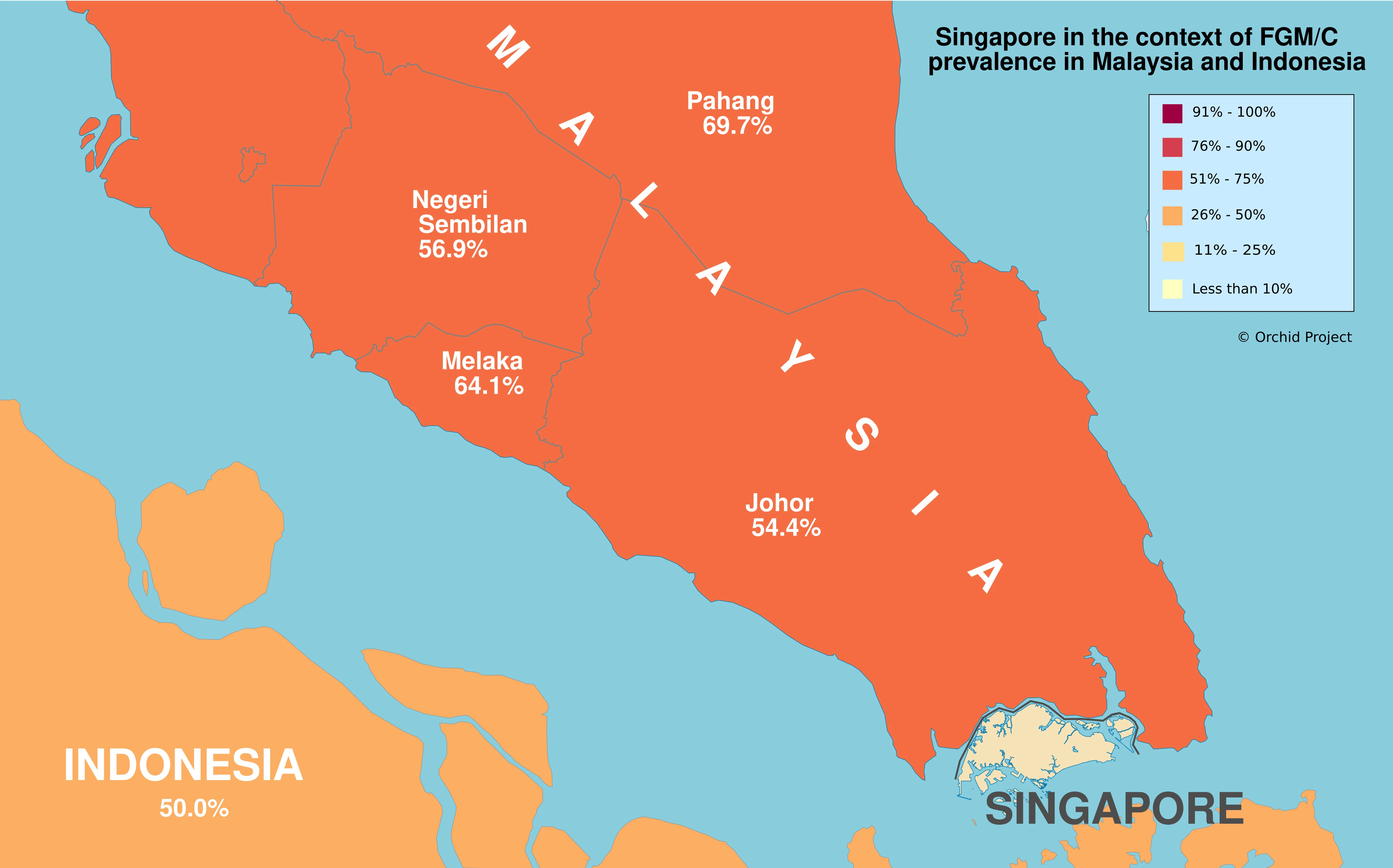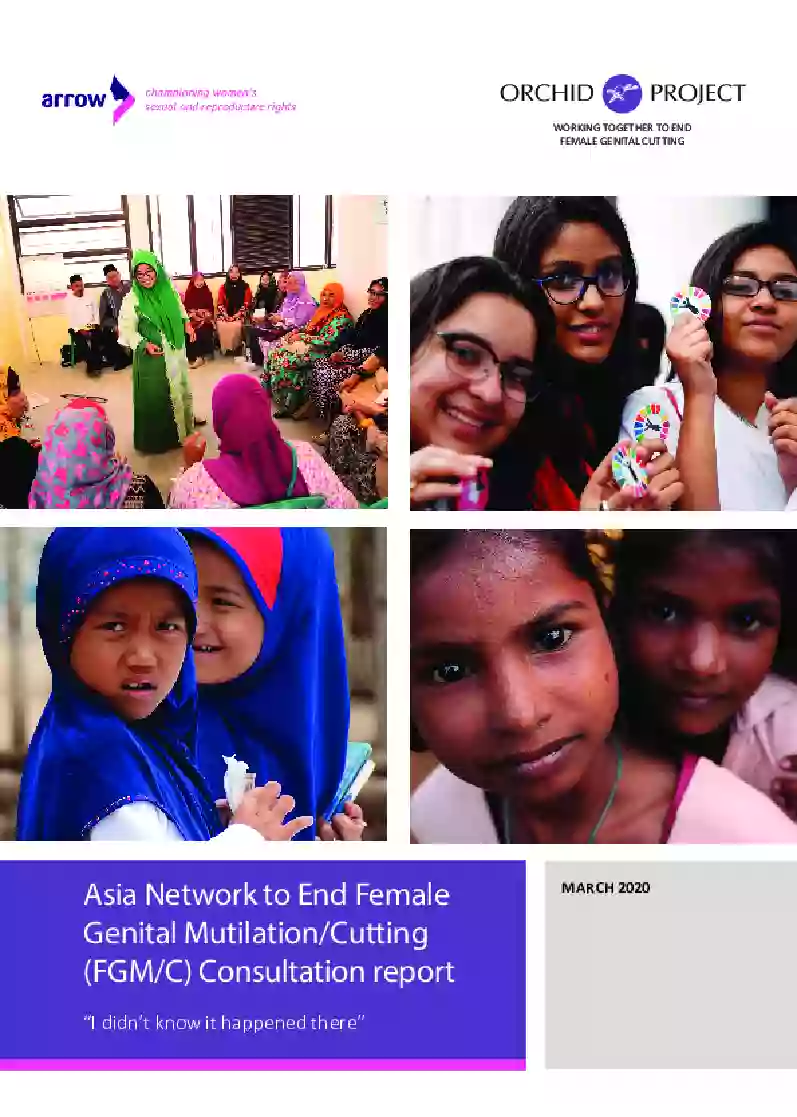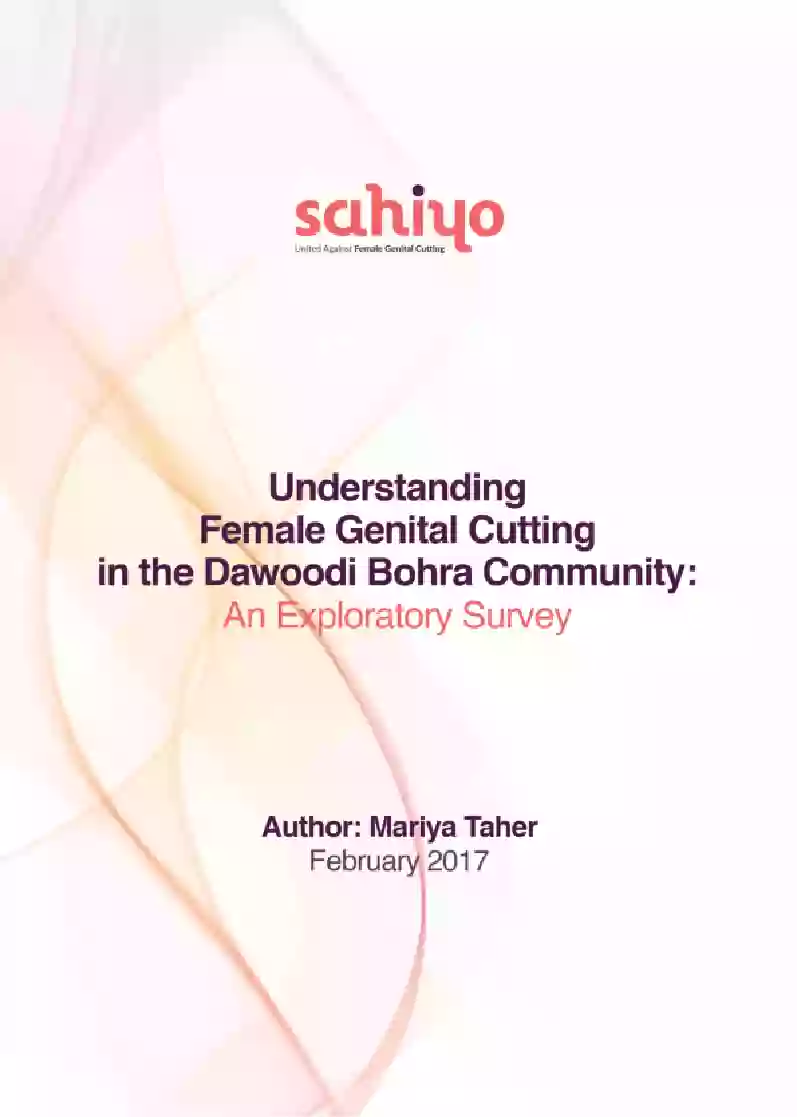Home | Research & Resources | Singapore
Key Findings
In Singapore, the prevalence of FGC is estimated to be between 75% and 85% among women in the Malay and Dawoodi Bohra communities.
FGM/C is referred to as sunat perempuan, sunat or khitan.
Attitudes
There is less support for FGM/C among the younger generations; nevertheless, many do not oppose medicalised FGM/C
Age
Girls are typically cut in infancy
Type
The most-commonly practised types appear to be Type 1 and Type 4
Agent
While almost a third of women don’t know who performed their FGM/C, nearly 50% are cut by doctors
Distribution of FGM/C across Singapore
There are no clear data to indicate the prevalence of cutting in Singapore, where, anecdotally, the practice appears to be limited to Muslims, including the Malay and Dawoodi Bohra communities. According to Singapore’s 2020 census, Muslims comprise 15.6% of Singapore’s population (aged 15 and over). 98.8% of Malays in Singapore identify as Muslim. A 2020 pilot study conducted by End FGC Singapore with Malay women living in Singapore found an FGC prevalence of 75%.
Although it is not possible to say in which parts of Singapore FGC mostly takes place, it is believed that most girls are cut in general-practitioner clinics. The End FGC Singapore survey found that 45.9% of respondents had been cut by doctors in general-practitioner clinics.
FGM/C Legislation in Singapore
There is no law against FGC in Singapore.
Potentially, FGC could fall under Sections 319–322 of the Penal Code, which relate to voluntarily causing hurt to another person:
an act that is done either with the intention to cause hurt or with the knowledge that hurt will likely be caused.
Development Indicators
Population Growth
6,313,430 (as at 12 February 2024) with a 1.97% growth rate (est.)
Infant Mortality
1.5 deaths per 1,000 live births (2024 est.)
Maternal Mortality
7 deaths per 100,000 live births (2020 est.)
SDG Gender Index
20 out of 144 countries in 2022



_cover.webp)
_cover.webp)

